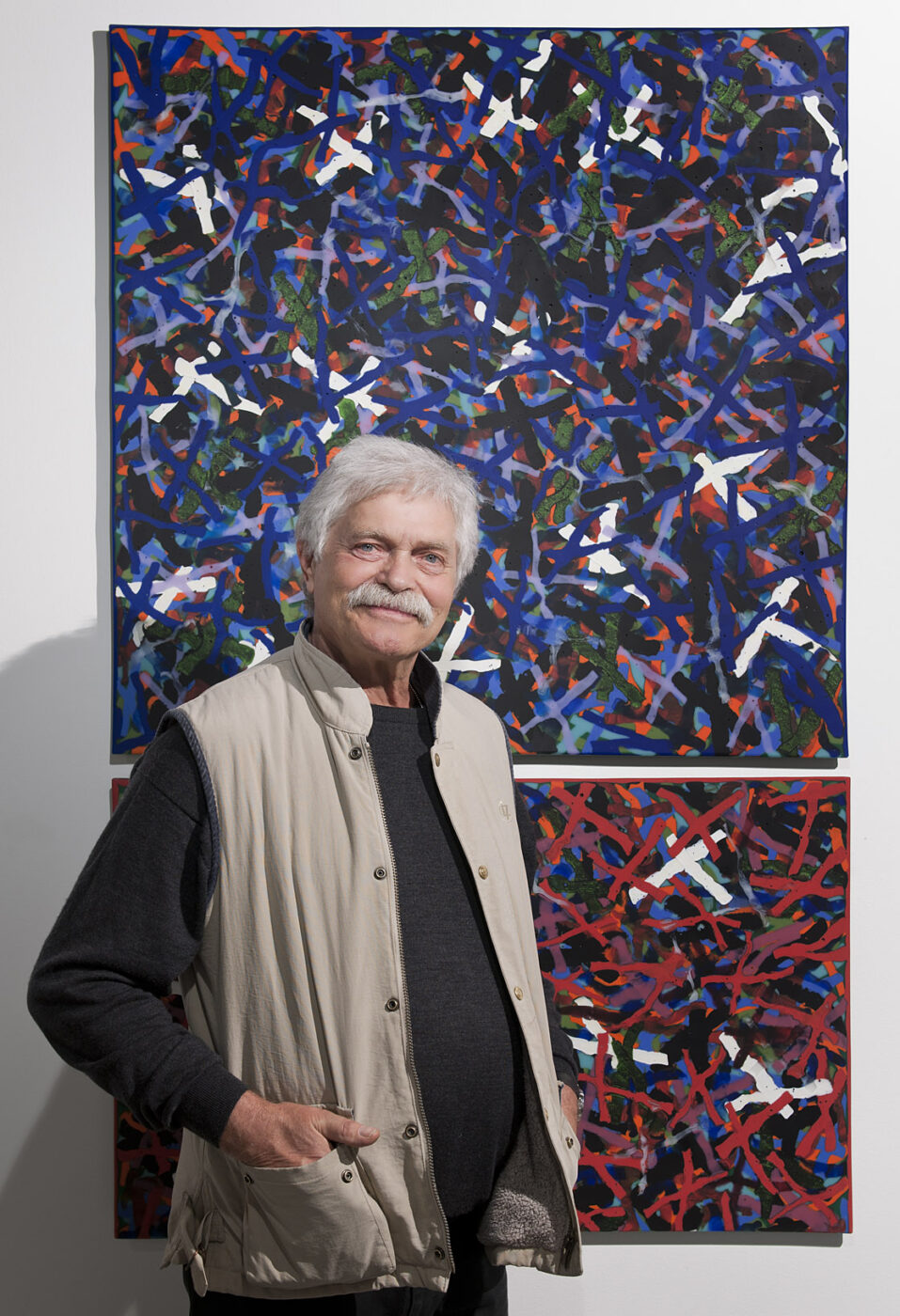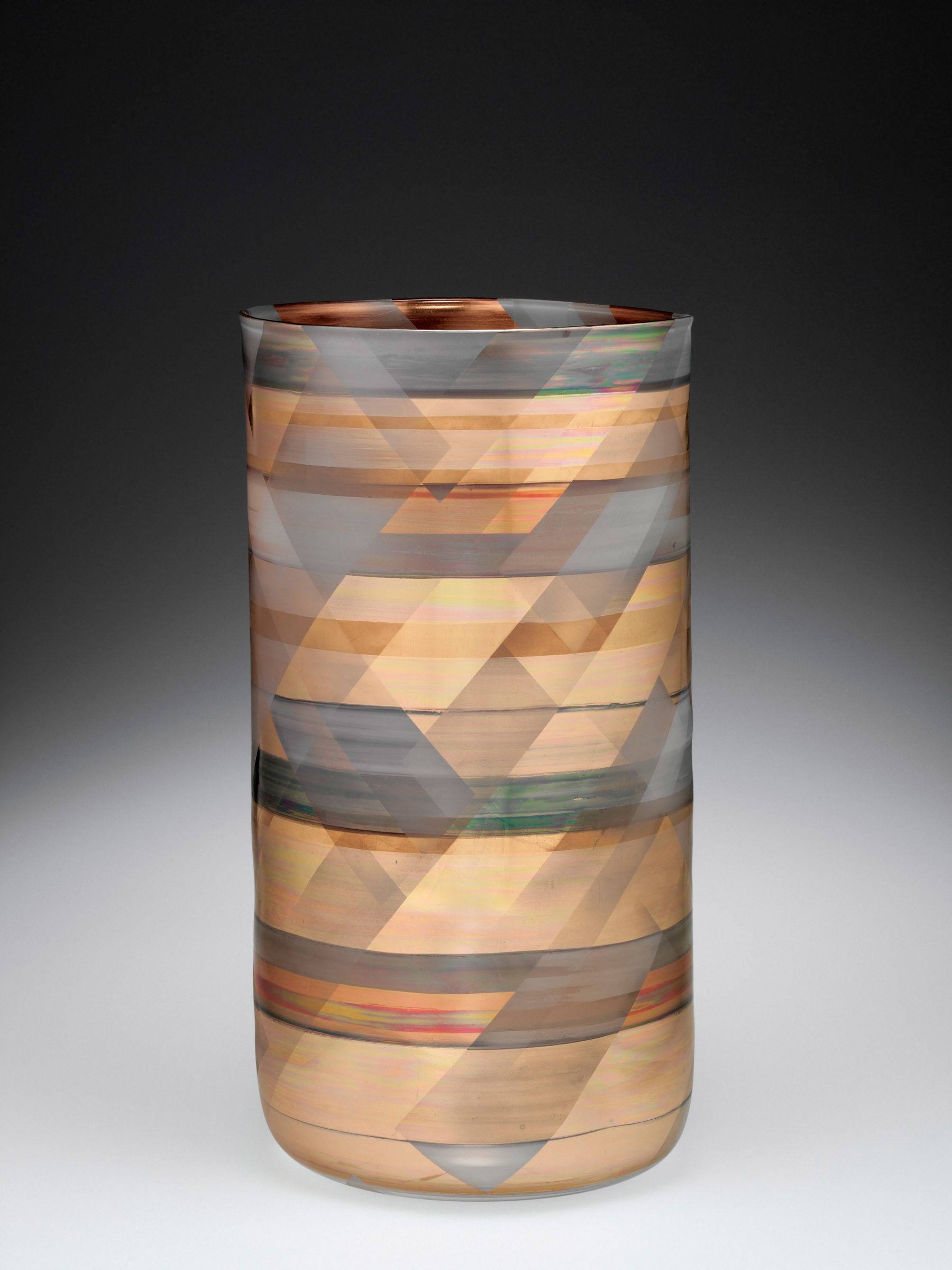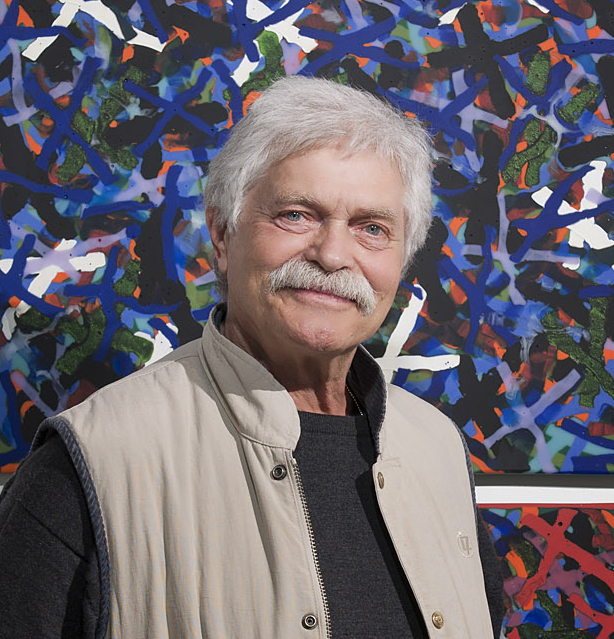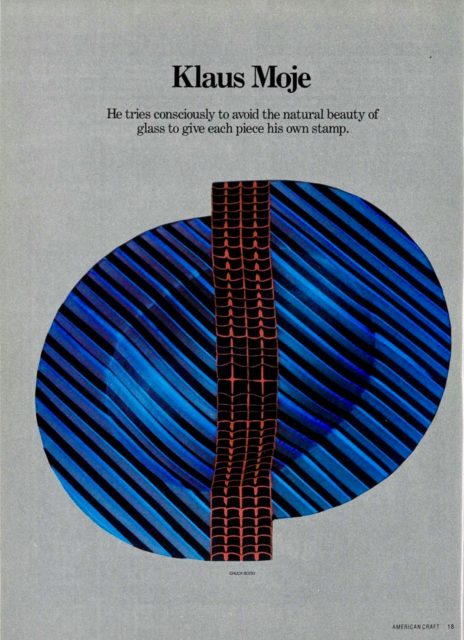
Image courtesy of Nola Anderson. Photo: Rob Little.
Klaus Moje
Artist Klaus Moje (1936–2016) trained as an apprentice glass cutter and grinder in his family’s firm in Hamburg, Germany, before earning a master’s certificate from Hadamar Glass School in 1959. Moje established a joint studio with his first wife, Isgard Moje-Wohlgemuth, in Hamburg in 1961. They worked on architectural window commissions before developing a range of lustreware glass vessels. Moje produced his first kiln-formed glass vessels in 1975. Kiln forming quickly became Moje’s signature technique, which he continued to use for the rest of his life. After moving to Australia in 1982 with his partner and later second wife, ceramicist Brigitte Enders, Moje founded the glass program at the Canberra School of Art (later the Australian National University School of Art and Design). He led the program for 10 years before setting up a joint studio with Enders in Wapengo, New South Wales. Moje’s glass is known internationally for its vibrant colors and abstract geometric designs.
Works

Bowl, 1980. Glass canes, slumped, fused, ground to matte finish. H: 7.1 cm, W: 32.4 cm, D: 24.8 cm. Collection of The Corning Museum of Glass, Corning, New York (82.3.33).

Untitled 3-1988-#15, 1988. Made at Canberra School of Art; Studio. Kiln-formed, grinding. H: 52.8 cm, D: 28.2 cm. Collection of The Corning Museum of Glass, Corning, New York. Gift of the Ben W. Heineman Sr. Family (2007.6.8).

He, 1989. Mold-blown glass, transparent enamels and luster. H: 52.8 cm, D: 28.2 cm. Collection of The Corning Museum of Glass, Corning, New York. Gift of the Ben W. Heineman Sr. Family (2007.3.89).

Klaus Moje talks with Paul Hollister about color in his work, purposely using a limited number of molds, and reworking a new piece in a 1982 interview at Pilchuck.
04:51 TranscriptBibliography

“Klaus Moje.” American Craft 44, no. 6 (December 1984/January 1985): 18–22.
Full issue: https://digital.craftcouncil.org/digital/collection/p15785coll2/id/13720/rec/33
American Craft Council, Digital File Vol44No06_Dec1984